Need help? We're here to assist you!
Thank You for Enquiry, we will contact you soon!
Close
The Class 7 is an important year in a student’s life and Maths is one of the subjects that require dedication, hard work, and practice. It’s a subject where you can score well if you are well-versed with the concepts, remember the important formulas and solving methods, and have done an ample amount of practice. Worry not! Home Revise is here to make your Class 7 journey even easier. It’s essential for students to have the right study material and notes to prepare for their board examinations, and through Home Revise, you can cover all the fundamental topics in the subject and the complete NCERT Class 7 Maths Book syllabus.

Exercise 15.1 Page: 281
1. Identify the nets which can be used to make cubes (cut out copies of the nets and try it):
(i)

Solution:-
The given net cannot be folded as a cube.
Because, it can be folded as below,

(ii)

Solution:-
The given net can be folded as a cube.
Because, it can be folded as below,

(iii)

Solution:-
The given net can be folded as a cube.
Because, it can be folded as below,

(iv)

Solution:-
The given net can be folded as a cube.
Because, it can be folded as below,

(v)
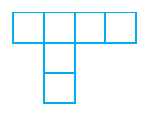
Solution:-
The given net cannot be folded as a cube.
Because, it can be folded as below,

(vi)
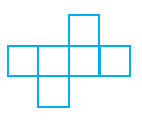
Solution:-
The given net can be folded as a cube.
Because, it can be folded as below,

2. Dice are cubes with dots on each face. Opposite faces of a die always have a total of seven dots on them.
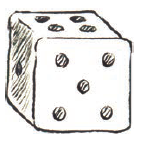
Here are two nets to make dice (cubes); the numbers inserted in each square indicate the number of dots in that box.

Insert suitable numbers in the blanks, remembering that the number on the opposite faces should total to 7.
Solution:-
(i)

By observing the above figure the sum of the opposite faces is equal to 7.
So, the given net can be folded into a net of dice.
(ii)

By observing the above figure the sum of the opposite faces is equal to 7.
So, the given net can be folded into a net of dice.
3. Can this be a net for a die?
Explain your answer.
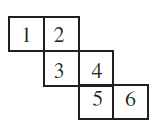
Solution:-
The given net is folded as dice is shown in figure below,

No, this cannot be a net for a die.
By observing the figure we can say that, one pair of opposite face will have 1 and 4, another pair of opposite face will have 3 and 6 the sum of these two opposite faces are not equal to 7.
4. Here is an incomplete net for making a cube. Complete it in at least two different ways. Remember that a cube has six faces. How many are there in the net here?
(Give two separate diagrams. If you like, you may use a squared sheet for easy manipulation.)
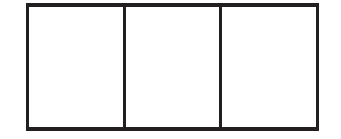
Solution:-
In the given net there are 3 faces and it can be completed as shown below,
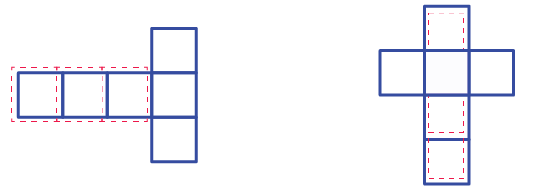
5. Match the nets with appropriate solids:
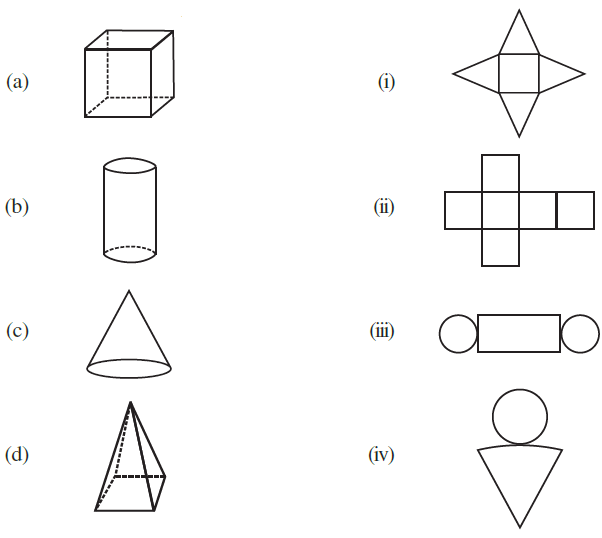
Solution:-
(a) (ii)
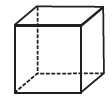
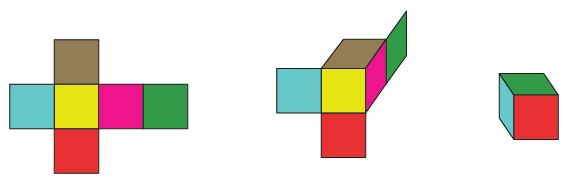
Because, the net (ii) can be folded as a square.
(b) (iii)


Because, the net (iii) can be folded as a cylinder.
(c) (iv)

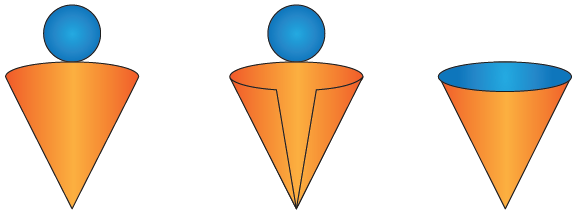
Because, the net (iv) can be folded as a cone.
(d) (i)


Because, the net (i) can be folded as a pyramid.
Exercise 15.2 Page: 285
1. Use isometric dot paper and make an isometric sketch for each one of the given shapes:
(i)
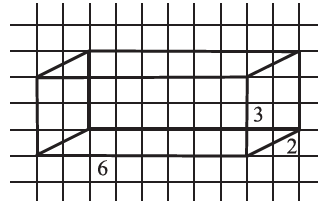
Solution:-
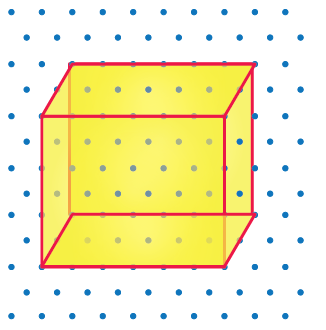
(ii)
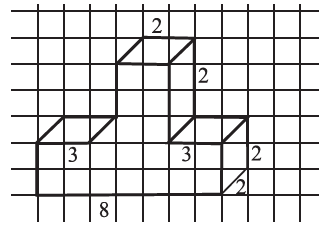
Solution:-
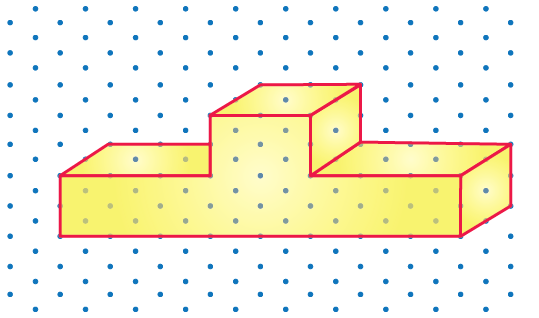
(iii)
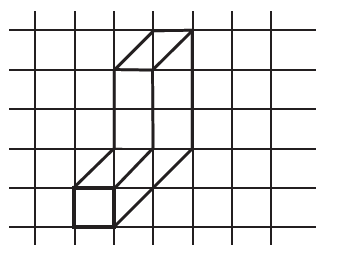
Solution:-
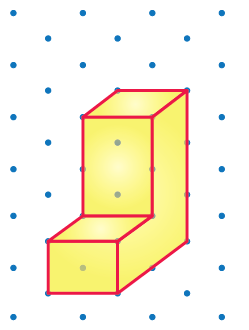
(iv)
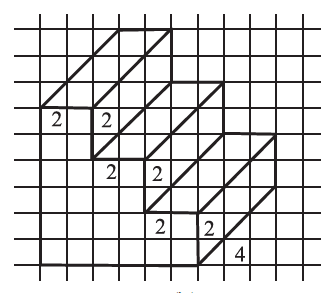
Solution:-

2. The dimensions of a cuboid are 5 cm, 3 cm and 2 cm. Draw three different isometric sketches of this cuboid.
Solution:-
From the question it is given that dimension of a cuboid are 5 cm, 3 cm, and 2 cm.
The three different isometric sketches of this cuboid is shown below,
1
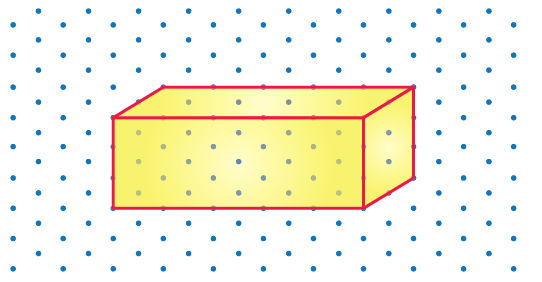
2
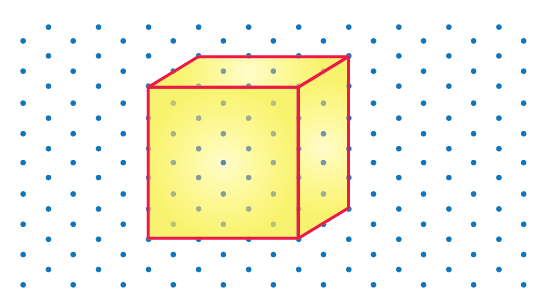
3

3. Three cubes each with 2 cm edge are placed side by side to form a cuboid. Sketch an oblique or isometric sketch of this cuboid.
Solution:-
Oblique sketch
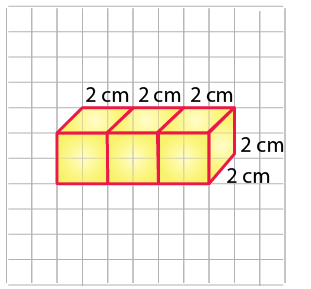
Isometric sketch
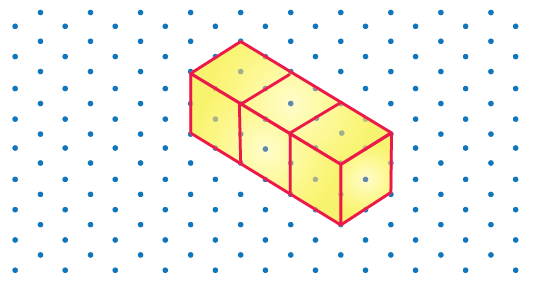
4. Make an oblique sketch for each one of the given isometric shapes:
(i)

Solution:-

(ii)
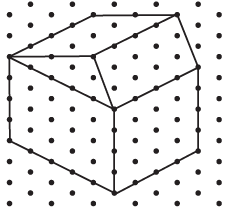
Solution:-
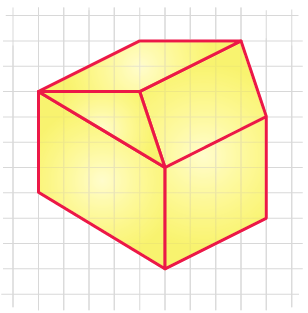
5. Give (i) an oblique sketch and (ii) an isometric sketch for each of the following:
(a) A cuboid of dimensions 5 cm, 3 cm and 2 cm. (Is your sketch unique?)
(b) A cube with an edge 4 cm long.
Solution:-
(a)
(i) Oblique sketch
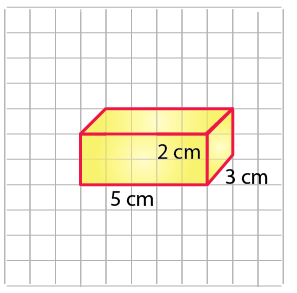
(ii) Isometric sketch
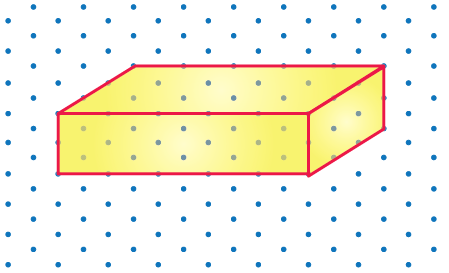
(b)
(i) Oblique sketch
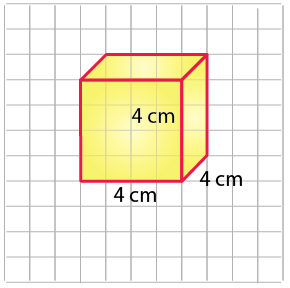
(ii) Isometric sketch

Exercise 15.3 Page: 288
1. What cross-sections do you get when you give a
(i) vertical cut (ii) horizontal cut
to the following solids?
(a) A brick
Solution:-
The cross-section of a brick when it is cut into vertically is as shown in the figure below,
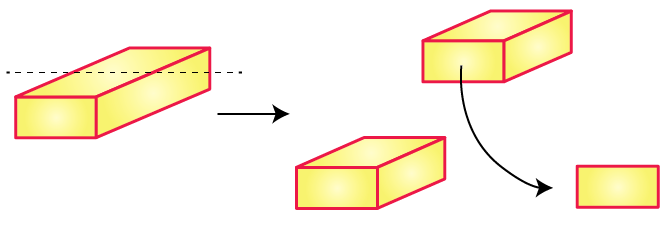
The cross-section of a brick when it is cut into horizontally is as shown in the figure below,

(b) A round apple
Solution:-
The cross-section of a round apple when it is cut into vertically is as shown in the figure below,

The cross-section of a round apple when it is cut into horizontally is as shown in the figure below,
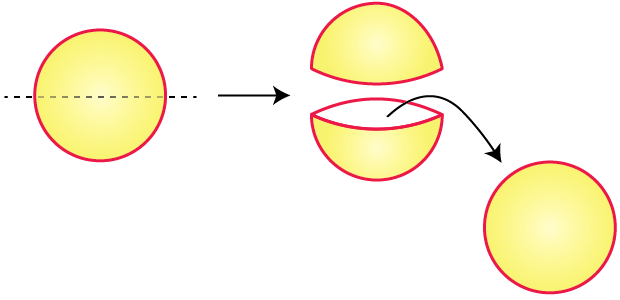
(c) A die
Solution:-
The cross-section of a die when it is cut into vertically is as shown in the figure below,

The cross-section of a die when it is cut into horizontally is as shown in the figure below,

(d) A circular pipe
Solution:-
The cross-section of a circular pipe when it is cut into vertically is as shown in the figure below,
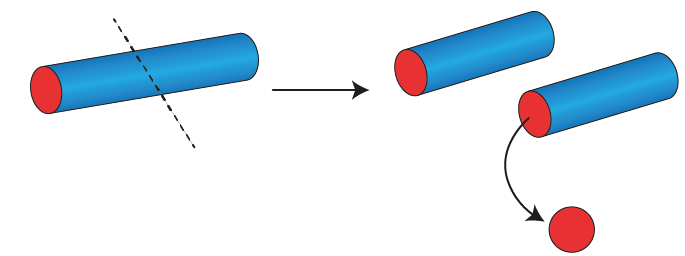
The cross-section of a circular pipe when it is cut into horizontally is as shown in the figure below,

(e) An ice cream cone
Solution:-
The cross-section of an ice cream when it is cut into vertically is as shown in the figure below,

The cross-section of an ice cream when it is cut into horizontally is as shown in the figure below,

Exercise 15.4 Page: 289
1. A bulb is kept burning just right above the following solids. Name the shape of the shadows obtained in each case. Attempt to give a rough sketch of the shadow. (You may try to experiment first and then answer these questions).
(i)
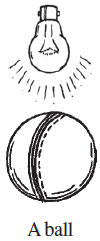
Solution:-
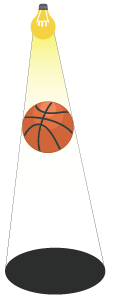
The shape of the shadow obtained from a ball is a circle.
(ii)
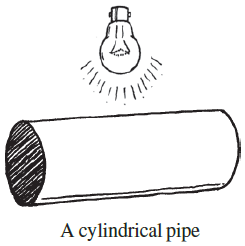
Solution:-

The shape of the shadow obtained from a cylindrical pipe is a rectangle.
(iii)
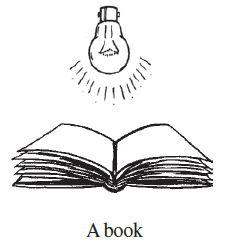
Solution:-

The shape of the shadow obtained from a book is a rectangle.
2. Here are the shadows of some 3-D objects, when seen under the lamp of an overhead projector. Identify the solid(s) that match each shadow. (There may be multiple answers for these!)
(i)
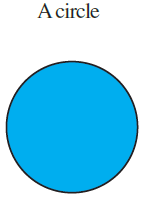
Solution:-
Cricket ball, water bottle cap, Disc
(ii)

Solution:-
Die, chalk box etc.
(iii)
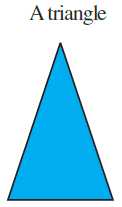
Solution:-
Birthday cap etc.
(iv)
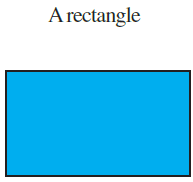
Solution:-
Book, keyboard, mobile, etc.
3. Examine if the following are true statements:
(i) The cube can cast a shadow in the shape of a rectangle.
Solution:-
The above statement is true.
(ii) The cube can cast a shadow in the shape of a hexagon.
Solution:-
The above statement is false.